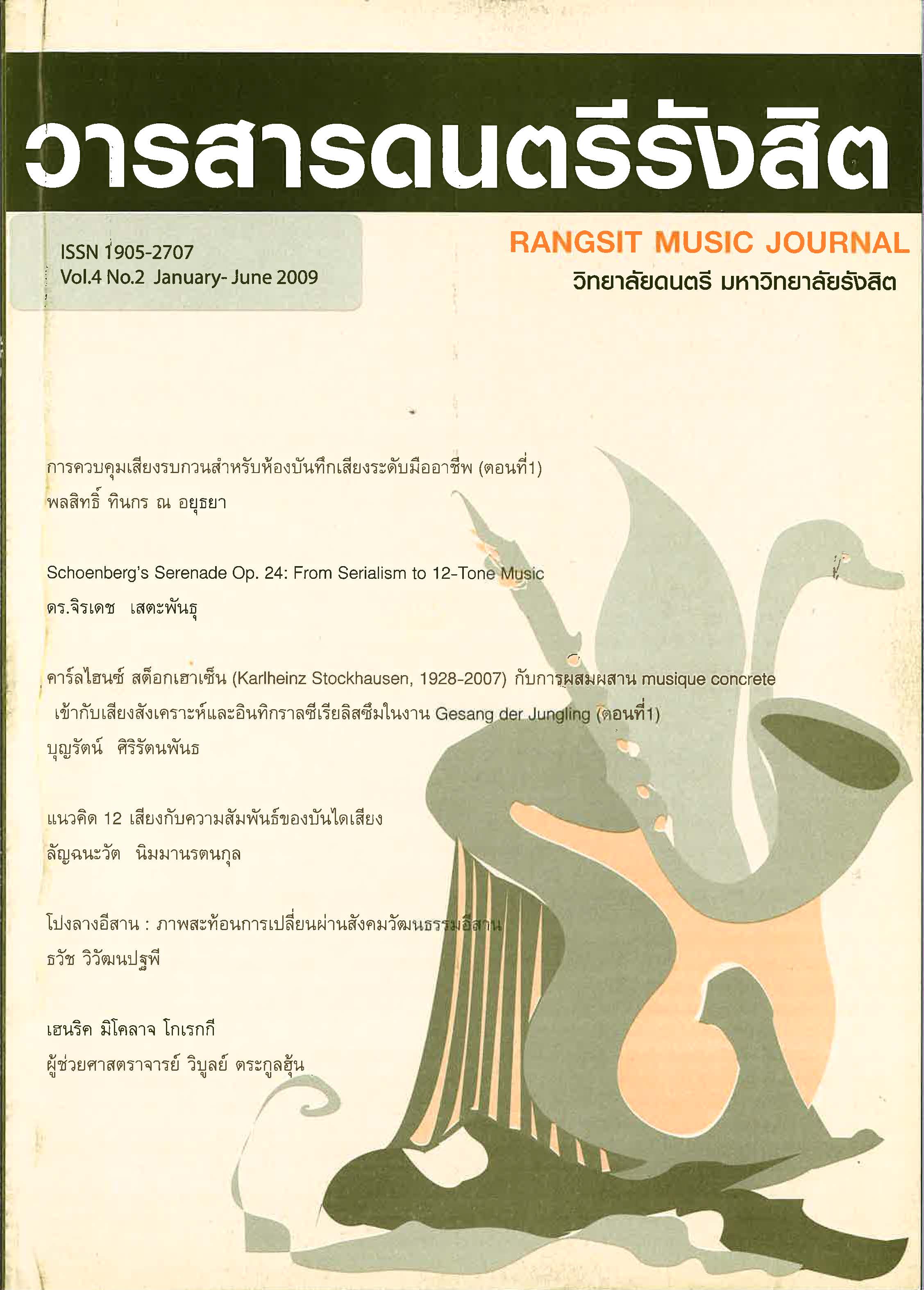Schoenberg's Serenade Op. 24 : From Serialism to 12-Tone Music
Keywords:
Schoenberg, Serenade Op. 24, Serialism, 12-Tone MusicAbstract
We have seen in the first part of the analysis how atonality was gradually transformed into serialism in the first two movements of Schoenberg's Serenade Op. 24. Nevertheless, the serial technique found in both movements does not yet encompass all elements of the music. This is not surprising, considering that the concept was being formed while the composer worked on those movements. It is only in the later movements that we see extensive treatments of serialism that would become the hallmark of Schoenberg's post-1923 composition. The third and fourth movements of the Serenade mark the composer's departure from free atonality and his first attempts in strict serial composition and 12-tone composition. The analysis of these two movements should shed some lights on Schoenberg's techniques found in his later composition as well.
References
2. _____. (1973). The Structure of atonal music. New Haven: Yale University.
3. Rahn, J. (1980). Basic Atonal Theory. New York: Schirmer.
4. Salzman, E. (1974). Twentieth-Century Music: An Introduction (2nd ed.). New Jersey: Prentice Hall.
5. Schoenberg, A. (1987). Arnold Schoenberg: Letters. Berkeley: University of California Press.
6. _____. (1984). Style and Idea: Selected Writings of Arnold Schoenberg. Berkeley: University of California Press.
7. Simm, B. (2000). The Atonal Music of Arnold Schoenberg, 1908-1923. New York: Oxford University.
8. Straus, J. (1990). Introduction to Post-Tonal Theory. New Jersey: Prentice Hall.







